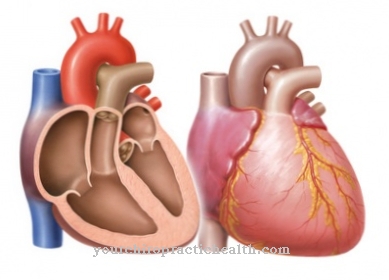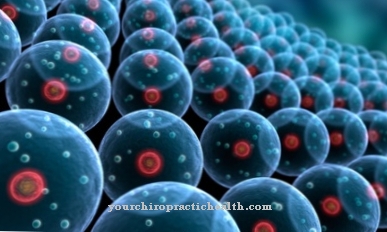The word aggression is often used judgmental in everyday life. In contrast, psychological definitions provide a purely descriptive state of affairs. Aggressive behavior should not be understood primarily as a disease.
Note: This article deals with "aggression" as a natural body process in humans, for example as a defense and defense reaction in a dangerous situation. If, on the other hand, you are interested in aggression as a symptom, we recommend this article: Aggression as a symptom & symptom pattern of various diseases.
What is aggression?
The use of the word aggression is not uniform. Definitions in psychology lay down this term in essence as a behavior directed towards harm. The focus is on the external attitude and not on emotions. Harm and intention are the common characteristics in psychological understanding of language. The everyday understanding, on the other hand, means internal hostile feelings and thus puts the main emphasis on the emotion. There is no fixed connection between the two meanings.
Aggressive behavior comes in different forms. The intention is crucial. An opposing action occurs physically (hitting, etc.), verbally (yelling, etc.), non-verbally (angry looks, etc.) or relationally (excluding someone, etc.). Aggressive emotions also show up in different variants. The impulse to harm or hurt gives the negative impact on other people. A hostile drive is expressed as an emotional drive (anger, etc.), as satisfaction (malicious pleasure, etc.) or as an attitude (hate, etc.). Both the behavioral level and the emotional level are scientifically measurable.
Function & task
The function of an attacking reaction is the fulfillment of individual or collective behavior. It can be associated with threats, relegation, physical injury, or even killing. The main causes either lie in the drive for personal self-assertion or in fear, rivalry and frustration.
The nature of man creates characteristics that cannot be proven in animals: aggression from obedience, from imitation or from arbitrariness. For a long time, the three classic approaches of drive theory, frustration theory and learning theory determined explanations for human attacking behavior. According to the drive theory, there is an innate source in the organism that constantly generates aggressive impulses. According to the frustration theory, aggressive motivations do not arise spontaneously, but rather as a reaction to disruptive, undesirable events. According to learning theory, aggressive behavior is determined by learning laws (learning based on success, learning based on a model). Today these theories are out of date. Today science is predominantly moving to multi-causal explanatory models. They focus on the interplay of several causes.
This is to be distinguished from end actions such as hitting, pushing, biting, etc., for which aggression is characteristic to a certain extent. But they are not tied to aggressive functions. Hostile behavior is therefore multipurpose behavior. The benefits of aggressive multipurpose behavior can be aimed at fulfilling one's own wishes or exercising power. This leads to success that can solidify into a habit in action.
Another benefit is material enrichment. The case study of the bank robber robbing a bank is well known. A benefit can also be based on gaining attention and recognition. In some cultures, violence is considered honorable and therefore arousing admiration, while its failure to do so is punished with contempt.
A benefit of hostile action can also lie in defense and self-protection by averting attacks or disturbances. The hostile behavior here has the character of a defense.
You can find your medication here
➔ Medicines to calm down and strengthen nervesIllnesses & ailments
Mental and emotional tension associated with aggression causes physical discomfort. Muscles and joints cramp and reduce blood flow, which is important for the supply of blood and oxygen. The result is tension in the joints, back and jaw, which causes pain.
Physical symptoms include insomnia, skin problems, weight fluctuations, high blood pressure, and stomach problems. Coping with a conflict situation through confrontation manifests itself in bad dreams and triggers panic attacks. In these stressful situations, the body reacts with increased oil production by the skin, which can lead to acne.
Exhaustion due to emotional compulsion can also lead to eating disorders. In contrast, impulsive internal processes trigger an increased heart rate. The regulation of blood pressure can be permanently damaged and cause chronic damage. Heart disease and heart attacks are possible consequences. The permanent pressure on the heart damages the heart in the long term.
The body is also responsible for emptying the stomach. Many people suffer from too much stomach acid during arguments. This can lead to tears in the lining of the stomach and bleeding in the stomach. As an automatic consequence, the body sends out emergency signals from the cardiovascular system.
Prolonged outbursts of anger have different effects on different parts of the human body. Permanent mental stress caused by inner excitement overworks the brain, which cannot recover.Constant alertness robs people of the energy to exercise self-control. As a result, this can in turn trigger fits of anger.
A strong internal stress and the production of adrenaline in massive confrontations weakens the immune system. There is no adequate defense against irritants. Allergic reactions, hives or shingles are possible harmful consequences. The connection between aggression and illness often remains unrecognized by those affected.



























